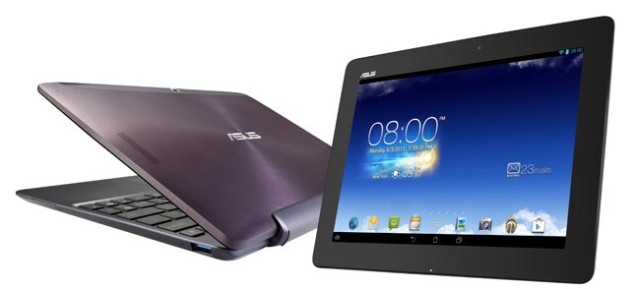
Perhaps the most impressive product to have come from ASUS’s event at Computex 2013 is this; the Transformer Pad Infinity. This device is an absolute stunner. Powered by a 1.9GHz NVIDIA Tegra 4 Cortex-A15 quad-core CPU — which has a 72 core GPU — and features a stunning 10.1-inch WQXGA 2560×1600 IPS display which will undoubtedly look amazing in the flesh.
Other specifications include 2GB of RAM, 5MP and 1.2MP cameras, USB 3.0 port and SD card slot, Wi-Fi a/b/g/n with Miracast support, Bluetooth 3.0, and 32GB of internal storage.
Again, there’s no official press release for this product yet. Not launching in Australia, says ASUS.
Source: Anandtech (photo).





After my Transformer Infinity you can count me out. At the very least I will be waiting a considerable amount of time to ensure it can SAFELY have a different ROM applied, as well as performing as I would expect a premium tablet to. Also, the screen cracking when I opened the device (in dock) after a couple of months shattered the likelihood of me buying another ASUS product. It would have to get unbelievably good reviews and a few months of excellent feedback on XDA to get me on board.
They won’t catch me again after the Transformer Prime – one of the worst duds I ever purchased!
OMG! You mean *I* was Jerry Shen all along?????
The main problem with this will be the Tegra 4. If it was anything like the Tegra 3 (original Infinity) I wouldn’t even bother looking at it.
No 802.11ac? Odd considering the HTC One and Samsung GS4 have it. Not that it’d be a dealbreaker for a lot of people but I guess it would have been good.
The Miracast support is 802.11ac
I don’t think so, I think they’re independent technologies (one is a standard, one is mostly software with hardware requirements). Miracast has been around before the 802.11ac standard was adopted. I believe high speed 802.11n devices can support Miracast in certain circumstances. Happy to be proved wrong though – got a link?
EDIT: From what I read, think of Miracast as an alternative to Apple’s Airplay, rather than a standard for hardware. Not 100% but it appears to be a compression/encoding type technology.
I’ll be more worried about the I/O, I hope it’s improved
And if they use cheap slow NAND it will all be worthless, here is hoping that they have learned from past mistakes
+1
Too many people care only about clock speed and resolution, when actual day-to-day use also depends on many other aspects like storage speed and memory bandwidth.
Admittedly you won’t be getting SSD-class NAND in a sub $400 device, but the fact that they’ve pointed out the eMMC storage on the presentation slide gives hope that they have learnt their lesson this time.